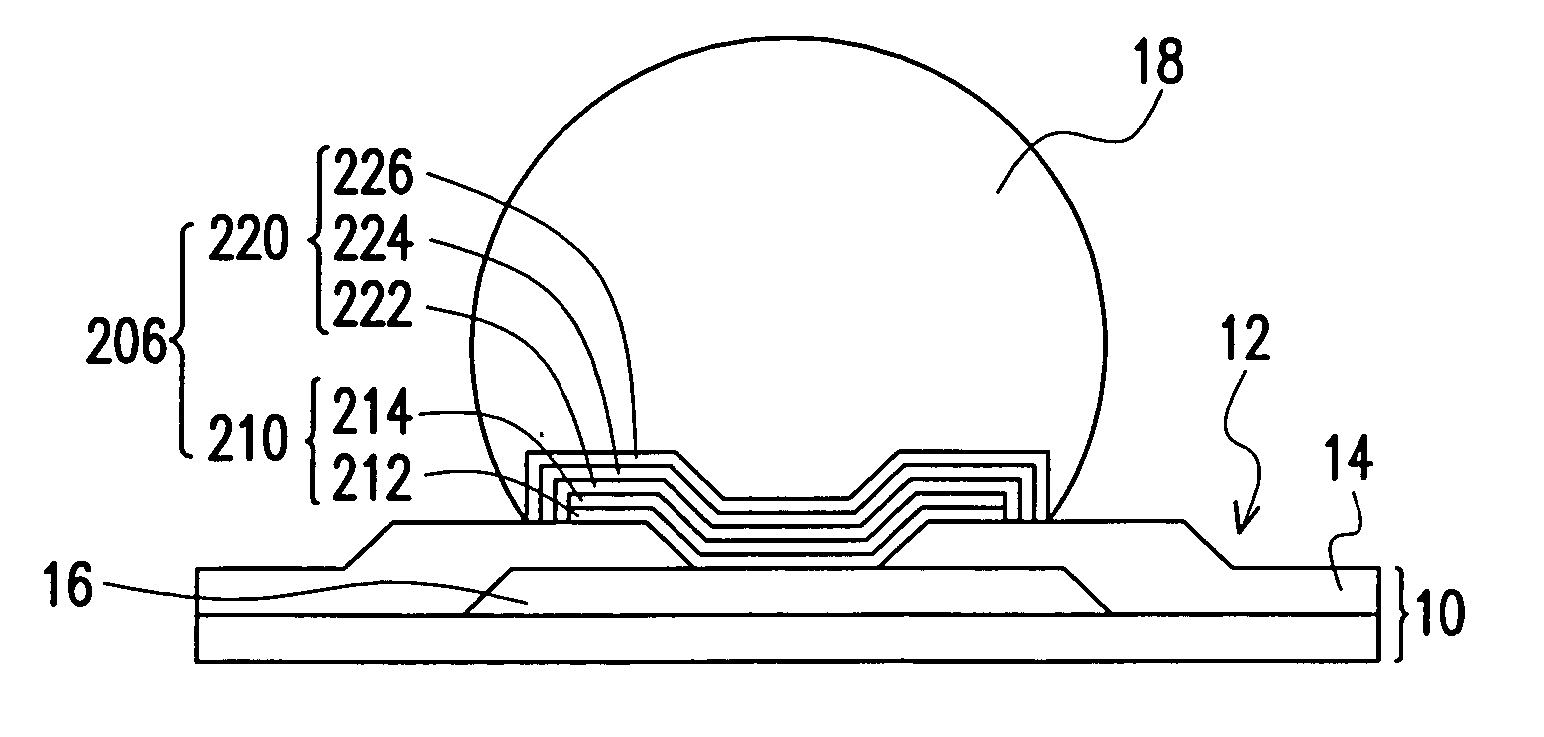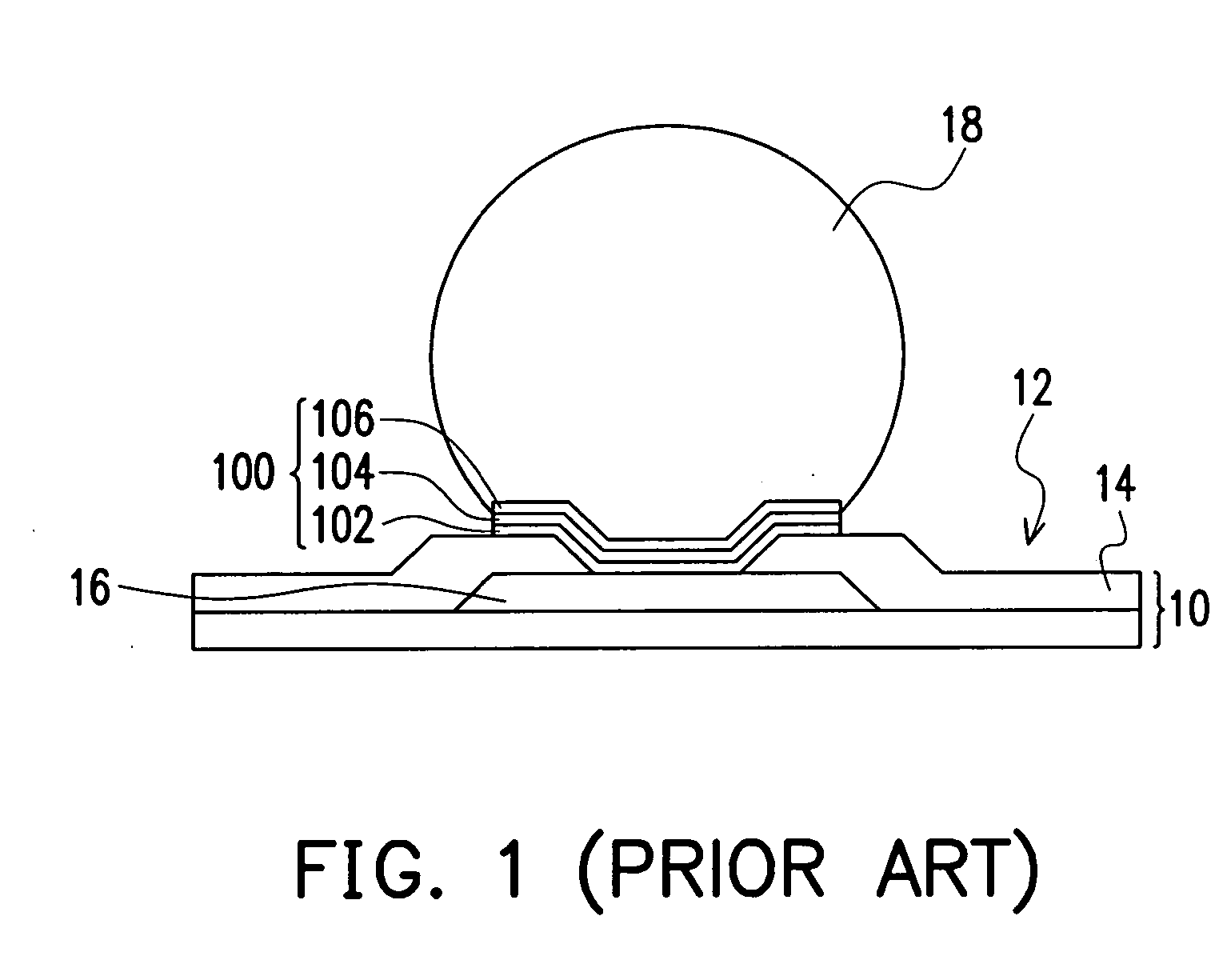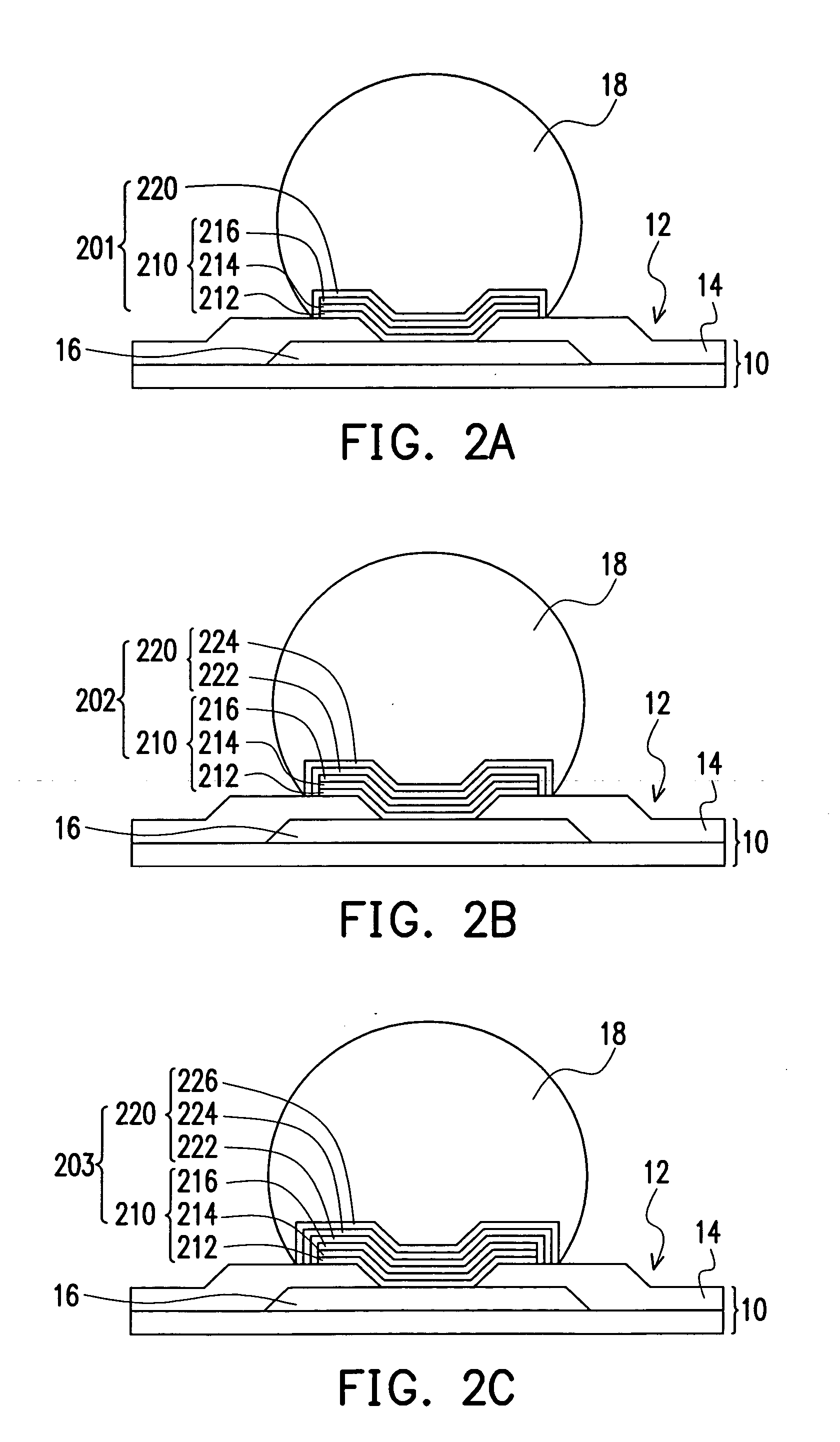Under-bump metallugical structure
- Summary
- Abstract
- Description
- Claims
- Application Information
AI Technical Summary
Benefits of technology
Problems solved by technology
Method used
Image
Examples
Embodiment Construction
[0020] Reference will now be made in detail to the present preferred embodiments of the invention, examples of which are illustrated in the accompanying drawings. Wherever possible, the same reference numbers are used in the drawings and the description to refer to the same or like parts.
[0021]FIG. 2A is a schematic cross-sectional view showing a first type of under-bump metallurgical structure between the bonding pad of a die and a solder bump according to a preferred embodiment of this invention. As shown in FIG. 2A, the die 10 has an active surface 12 with a passivation layer 14 and a plurality of bonding pads 16 (only one is shown) thereon. The passivation layer and the bonding pads 16 are formed over the active surface 12 of the die 10 such that the passivation layer 14 exposes the bonding pads 16. Note that the active surface 12 of the die 10 refers to the side where all active devices are formed. To provide an interface for joining the bonding pad 16 and the solder bump 18 t...
PUM
 Login to View More
Login to View More Abstract
Description
Claims
Application Information
 Login to View More
Login to View More - R&D
- Intellectual Property
- Life Sciences
- Materials
- Tech Scout
- Unparalleled Data Quality
- Higher Quality Content
- 60% Fewer Hallucinations
Browse by: Latest US Patents, China's latest patents, Technical Efficacy Thesaurus, Application Domain, Technology Topic, Popular Technical Reports.
© 2025 PatSnap. All rights reserved.Legal|Privacy policy|Modern Slavery Act Transparency Statement|Sitemap|About US| Contact US: help@patsnap.com



